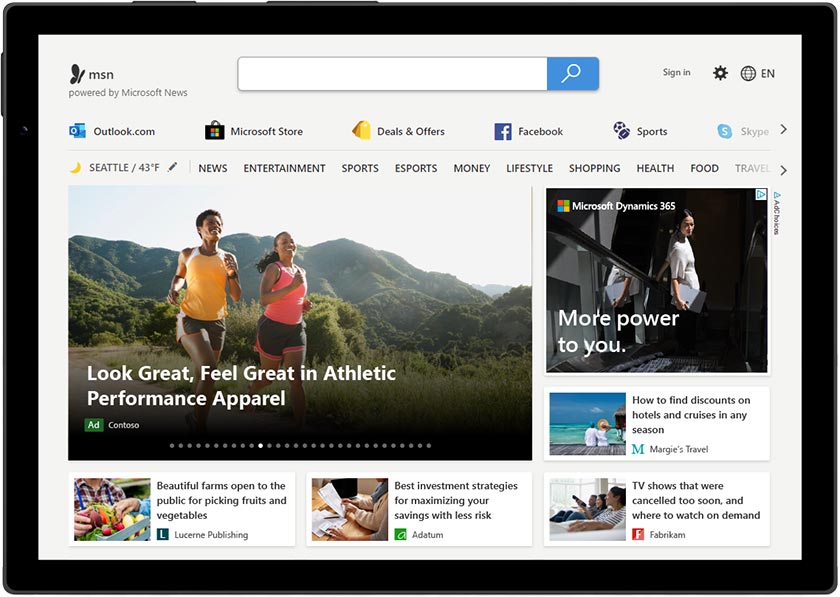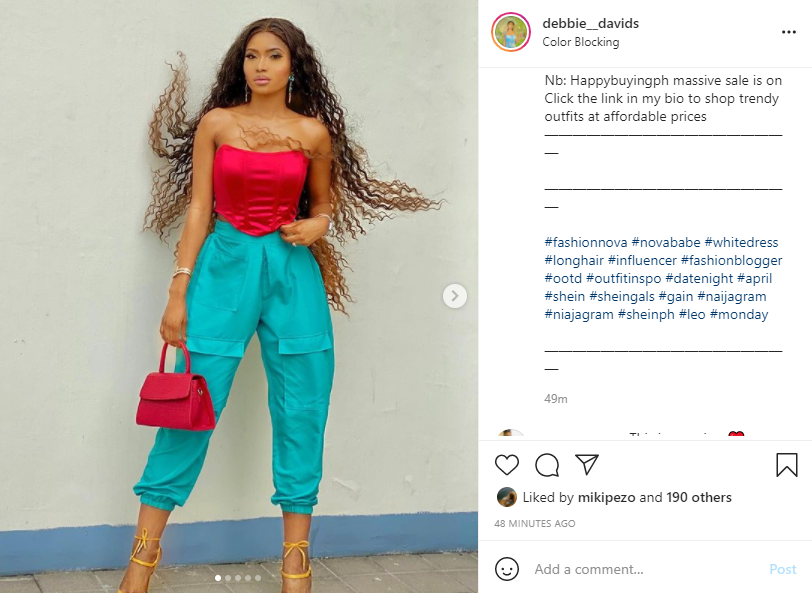
OOH advertising is a great way for brands to raise brand awareness, increase recall values and grow sales. It has a wide reach, is one of the least intrusive forms of advertising, and provides advertisers with a wide range of opportunities.
Digital out-of–home advertising is making it easier than ever before to monitor campaign performance. As a result, DOOH is able to offer advertisers an even more personalized experience. Advertisers are able to target specific demographics and use real-time data such as weather or flight arrivals to launch targeted campaigns that engage the right audiences at just the right time. Quividi has sensors and cameras that can be used by marketers to measure the effectiveness their ads.
Bus advertisements are one the most obvious types of OOH. Bus advertisements can be followed by audiences on their daily commutes. They are able to reach large audiences, especially in areas that lack other media. They can be strategically positioned to draw a large number of consumers and create a lot of buzz.

Another form of DOOH is the large format. This medium can range from billboards along major highways to bus shelters placed on sidewalks. These DOOH ads, no matter what format they are in, have the power to engage viewers and make lasting impressions.
Other less traditional forms of OOH include street furniture and mall displays. While these examples may not be as flashy as the new digital screens, they have a long and storied history of effectiveness. To reach diverse audiences, for example, the Visit Seattle campaign used bus advertising.
Digital out-of home advertising is growing in popularity. Programmatic DOOH and mobile advertising offer advertisers unparalleled reach. Advertisers can target specific locations and routes with mobile billboards to maximize their ad exposure. Programmatic ad-buying allows for ad segmentation. This allows for greater spend to be justified. Using location observation data, advertisers can identify traffic patterns that are anonymous, providing them with mobile ad IDs that can be correlated with other forms of marketing.
A smart way to distinguish your brand is to create an interactive DOOH campaign. A retail brand could use DOOH to generate top-of-mind awareness for a new product and then follow up with mobile with a targeted message.

A campaign that is effective will require you to learn the best ways to use OOH. Your campaign will benefit from a knowledgeable team. There are many. For more information, or to discuss how your company might benefit from OOH, please don't hesitate.
There are many ways to enhance the effectiveness your OOH strategy. You can target specific demographics, or use a SaaS platform for campaign management to make it more efficient. It is crucial to first understand the goal of your campaign.
OOH ads need to be eye-catching, easy to understand, and entertaining. To grab the attention of your intended audience, use the right visuals and few words. Your brand and products should be promoted.
FAQ
Advertising what is it?
Advertising is an art form. It's more than just selling products. It's about creating emotional connections between people and brands.
Advertising is about communicating ideas through images and stories.
You have to make sure you are communicating clearly and persuasively. You must tell a story that is relatable to your target market.
Advertising is thus different from other forms, such public speaking, writing, and presentations.
Because when you create a successful ad campaign, you are creating a brand identity for yourself.
This is how to be remembered. You will be remembered by others.
What is an Ad Campaign?
Advertising campaigns are a series or advertisements that promote a product. It could also refer the entire production of such advertisements.
"Ad" is a Latin word that means "to sell." Marcus Terentius Varro (116–27 BC) was the first person to use it. It meant "to sell".
Advertising campaigns are most often done by large agencies or businesses. Many media types can be used in these campaigns, including television, radio and print.
Advertising campaigns last several months and are usually focused on specific goals. One example is that some campaigns seek to create awareness while others are more focused on increasing sales.
How much does it take to advertise on social networks?
This route is not for everyone. You'll be charged monthly according to how long you spend on each platform.
Facebook - $0.10 per 1,000 impressions
Twitter - $0.20/1000 impressions (if applicable)
If you send invitations, Linkedin: $0.30 per 1,000 impressions
Instagram: $0.50 per 1,000 impressions
Snapchat – $0.60 per 1,000 impressions ($0.40 for each user)
YouTube - $0.25/1000 views
Tumblr - $0.15 per 1,000 impressions for text posts.
Pinterest - $0.05 per 1,000 impressions per month
Google + $0.15-$0.20 Per 1 Million Impressions
Tumblr – $0.15 - $0.20 per 100,000 impressions
Vimeo - $0.20 to $0.25 per 10,000 impressions
Soundcloud: $0.20-$0.25 Per 1 Million Plays
StumbleUpon - $0.20 -$0.25 per 1 billion pageviews
Digg: $0.20 – $0.25 per 1,000 diggs
Reddit $0.20-$0.25/1000 comments
Wordpress $0.20-$0.25 per 500 Comments
Flickr - $0.20 -- $0.25 per 5,000 photo uploads
What should you know about radio advertising
It is important that you understand the differences between media. Remember that all media types are complementary, not competing.
Radio is best used to complement television advertising. It complements TV by reinforcing key messages and providing additional information.
Radio listeners often find TV commercials too lengthy. Radio ads are generally shorter and less expensive.
What is advertising's primary purpose?
Advertising is more about connecting with customers than just selling products.
Advertising is about communicating values and ideas to people who are interested in your products or services. Advertising is about changing minds and attitudes. It's all about building relationships.
It's all a matter of making people feel good.
However, if your customers don't want what you have to offer, you won't be able to sell anything.
Prior to you begin any advertising project, make sure you understand your customer's buying habits and needs.
This will allow you to create ads that resonate with your target audience.
Is it possible for traffic to be free?
Free Traffic refers to the traffic that comes directly from organic search results without paying for ads. This type is known as natural, or organic traffic. There are many methods to obtain free traffic such as article marketing or social media marketing.
Article Marketing is a popular way to get traffic for free. It has an extremely low cost-per-click (CPC). Paid ads are more expensive than the CPC. Article marketing is also known as content marketing.
Social Media Marketing: Social media sites such as Facebook, Twitter, LinkedIn, and LinkedIn make it easy to promote your company through advertising. These social media platforms can be used to post updates and share photos. You may also build relationships with potential customers. Many businesses choose to buy ad space in social media because they want a wider reach at a reduced price.
Blogging-Blogging is another great way of generating free traffic. You'll attract visitors if you write quality content that people enjoy reading. Once you're attracting visitors, you can monetize your blog by selling products or services.
Email Marketing - Email marketing has been around since the early days of the Internet, but today it still remains one of the best ways to drive traffic to your website. It is a great way to increase your subscriber base and sell products.
Why not advertise your business on social media?
Social Media Marketing allows you to reach customers right where they are, via social networks like Facebook, Twitter, LinkedIn and YouTube. You can also target specific audiences within these networks by using keywords.
Because it is cheaper to market online than traditional advertising methods, this advertising method is more cost-effective. It also allows you to build strong relationships with your current and potential clients.
It's simple to begin using social media to promote a business. You only need a smartphone or computer and internet access.
Statistics
- This means that at least 50% of an ad needs to be shown on the screen for at least one second. (quicksprout.com)
- In 1919 it was 2.5 percent of gross domestic product (GDP) in the US, and it averaged 2.2 percent of GDP between then and at least 2007, though it may have declined dramatically since the Great Recession. (en.wikipedia.org)
- It collects money from the advertisers, keeps 32% for its role in facilitating the process, and the remaining 68% goes to the publisher (you). (quicksprout.com)
- Google will display whichever ad type (CPM or CPC) is expected to earn more revenue for the publisher, which is in Google's best interest since they take a 32% share of the revenue. (quicksprout.com)
External Links
How To
How to create sponsored ads on Facebook
Facebook is now one of the most used social networking sites. It has been estimated that there are 1.79 billion active monthly users worldwide. It keeps growing each day.
Facebook is completely free. However you can pay to reach specific audiences. Paid advertising options include promoted posts and banners.
Log into the existing app if you already have it registered. Or click "Create New App." Next, follow these steps.
-
Click "Add Platform" in the Apps section.
-
Click on "Advertising" and then click Continue.
-
Complete the form and send it in.
-
After approval, you will get a Client ID and Secret key. Copy them down.
-
and paste the keys into the appropriate fields.
-
Enter the name of your campaign and select the currency.
-
Click on "Start Campaign"
-
Follow the instructions until your first banner appears. Next, copy the URL to return to your Facebook Page.
-
Paste the code in the box provided via Facebook
-
Click "Save Changes".
-
Your ad is now live!
-
Repeat steps 10-12 to create each additional banner.
-
When finished, click "Continue" and proceed with the rest of the process.
-
Create your final ad group.
-
Once your campaign is complete, click the "View All Ads” link to view all of it.
-
To delete any ads click on the "Remove Ads” button next to each individual ad.
-
If you don't see any results after running your campaign you should double-check that you followed the instructions correctly.
-
Make sure to check the dates of your campaign.
-
It is important to budget properly.
-
Save your changes.
-
Review the settings for your campaign before clicking "Submit."
-
Wait for your ads appear on your timeline
-
Congratulations on a job well done!
-
Now let's look at some tips for improving your results.